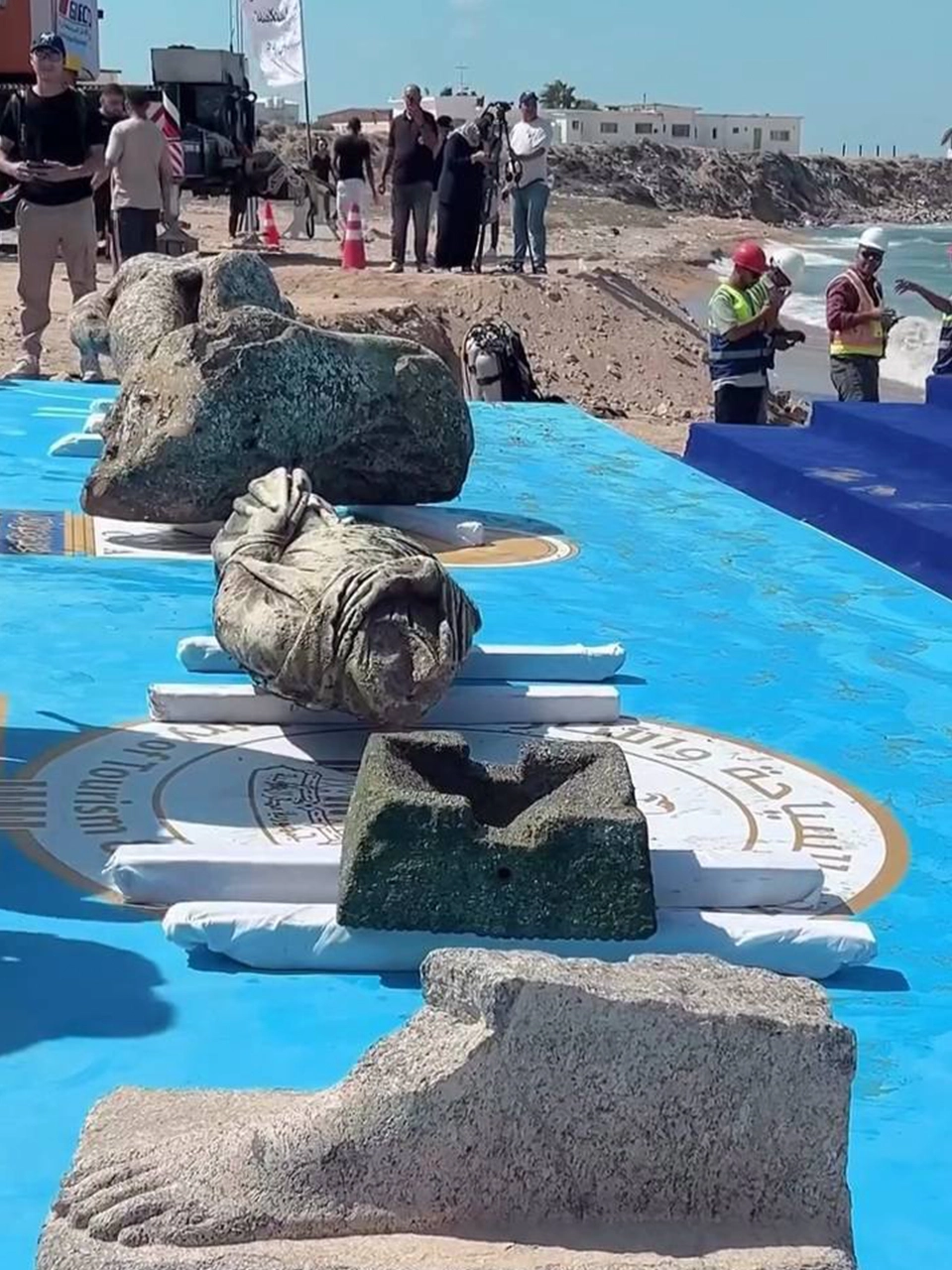
Divers observe as a crane lifts a recovered artifact from the seabed of Abu Qir Bay on the Mediterranean Sea on August 21. The Egyptian Ministry of Tourism and Antiquities showcased 86 similarly salvaged submerged relics, such as rare statues, jewelry and pottery, at the opening of the 'Secrets of the Sunken City' exhibition at the Alexandria National Museum the day before
Last week I came across this image in nearly every major newspaper I usually consult. The moment I first saw it, I saved it immediately—not only because it gave me a sense of quiet delight, but also because it seemed perfectly suited for this very section. When it began multiplying across the media, I imagined the exhilaration must have been universal. Most readers, I suspect, felt a similar surge of joy.
The story, when told well, is that a group of archaeologists has begun recovering remnants of Canopus, a city of Hellenistic and Roman Egypt that has lain submerged for two thousand years. The excavation took place in Abu Qir Bay, some twenty-five kilometers from Alexandria. Canopus was never a mere provincial town. Situated at the mouth of the westernmost branch of the Nile Delta, known as the Canopic or Heracleotic branch, it flourished as a vital commercial and spiritual center even before the rise of Alexandria. Less renowned than its illustrious neighbor, it needed neither a great library nor a wondrous lighthouse to affirm its presence.

Why does the sight of a stone being lifted from the water fill us with such elation?
Perhaps because human beings have always perceived the sea, the river, and the lake as domains that conceal the inaccessible. Whatever sinks beneath their surface seems condemned to oblivion. When an object, a statue, or even an archaeological fragment emerges from that hidden realm, a revelation takes place, stirring the most ancient impulses of our condition: the urge to discover, the thrill of recovering what seemed irretrievably lost, the fleeting illusion of conquering disappearance itself. The passage from the invisible to the visible restores fragments of history and memory, confirming that it is still possible to wrest secrets from darkness and defy the advance of time. In that gesture lies a symbolic victory over forgetting and death, which is why the sight of something lifted from the water awakens a joy that transcends the material find and touches the most elemental of human emotions.
Canopus, however, did not survive the blows of nature. Earthquakes, tsunamis, and the liquefaction of its soils caused its progressive submersion. By the end of the second century after Christ, much of it had vanished beneath the Mediterranean. Though its history was never entirely forgotten, its remains only now break the surface.

With the marbles comes another certainty: beautiful Alexandria may face the same fate. The city is sinking at a rate of three millimeters per year—hardly a reason to pack one’s bags, but perhaps enough to spread a few maps across the table. Experts warn that by 2050 a third of the city could be under water. They are often wrong, of course, but one day they may not be.
The lesson extends beyond climate change to the unanticipated fragility of civilizations. For now, archaeologist Franck Goddio combs the Nile Delta with magnetometers and side-scan sonar, piecing together, fragment by fragment, the outlines of its urban, commercial, and religious life. Along with Heracleion and Naucratis, Canopus formed a port triangle that connected Egypt with the Hellenic world.

















Comments powered by Talkyard.